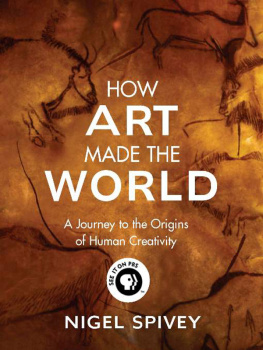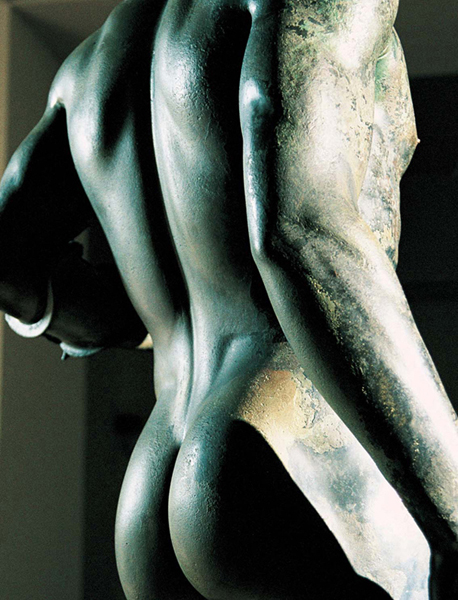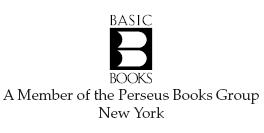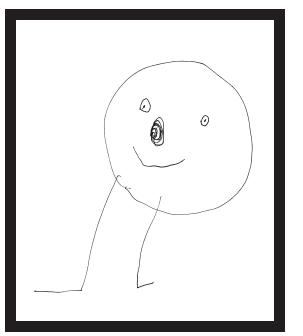HOW ART MADE THE WORLD
HOW ART MADE THE WORLD
A Journey to the Origins of Human Creativity
NIGEL SPIVEY
To Anna-Louise
sine qua non
First published in 2005 by BBC Books, BBC Worldwide Limited,Woodlands, 80 Wood Lane, London W12 0TT.
Copyright Nigel Spivey 2005
Published by Basic Books,
A Member of the Perseus Books Group
All rights reserved. Printed in the United States of America. No part of this book may be reproduced in any manner whatsoever without written permission except in the case of brief quotations embodied in critical articles and reviews. For information, address Basic Books, 387 Park Avenue South, New York, NY 100168810.
Books published by Basic Books are available at special discounts for bulk purchases in the United States by corporations, institutions, and other organizations. For more information, please contact the Special Markets Department at the Perseus Books Group, 11 Cambridge Center, Cambridge MA 02142, or call (617) 252-5298 or (800) 255-1514, or e-mail .
Library of Congress Cataloging-in-Publication Data
A CIP catalog record for this book is available from the Library of Congress
ISBN 0-465-08181-9
ISBN-13: 978-0-465-08182-0 (pbk); ISBN 0-465-08182-7 (pbk)
Set in Gill Sans and Plantin
01 02 03 04 05 / 10 9 8 7 6 5 4 3 2 1
1
THE HUMAN ARTIST
ONCE THERE WAS AN ARTIST who was also a teacher of art. He held classes at an art school, and many students signed up to follow them. So many students applied to take this artists lessons that the directors of the art school became alarmed.There was not enough space, they said, to accommodate such a crowd of apprentices.They summoned the artist and ordered him to cut down the number of people taking his lessons. You mean I must reject some people who apply? he asked. Of course! replied his superiors. Not possible, said the artist. Why not? they asked. Because everyone is an artist, declared the artist. He refused to alter that faith: in the classroom he would chalk up the message, EVERYONE IS AN ARTIST. Eventually the directors of the art school had him dismissed.
We see a hand: it seems to wave or reach to us across centuries and across continents (). It is represented without great dexterity or skilful manipulation, yet it is, at the same time, a significant imprint of the potential for just that great dexterity, skilful manipulation. For the structure of bone, tendon and muscle within the human hand is one of the key anatomical features by which humans are defined. Compared to the primates - gorillas, chimpanzees and other ape-like relatives of the human species humans have hands that are distinctive. Chimpanzees can peel bananas and can also (if required) lift china teacups; but their grasp is essentially one of power rather than precision. Unlike humans, they cannot cup their palms. And the digits of a human hand are not only straighter and more extensive than those of the primates. In particular, human fingers have a third joint or phalange, which enables a large range of precise and delicate movements; and each hand has an elongated thumb, set at a wide angle to the palm and providing further possibilities of flexion and grip.Without this opposing thumb we should hardly be able to write a word, sketch a line or fire a gun.
The first detailed anatomical drawings of the hand were made by European artists in the early sixteenth century. And in their isolated studies of the hand, artists around this time surely worked with a sense of conscious dependence ().The surgeon himself uses the thumb and index finger of his right hand to hold his forceps, while emphasizing the opposing thumb gesture with his left.The painter recording this scene knows well enough what the message was at the time: that this prehensile capacity came as a divine gift a gift distinctively raising humankind above all other creatures.
In the annals of human evolution the fossilized relics of these hands, with triple-phalanged fingers and wide-set thumb, are directly related to another peculiarity of the species the big toe at the end of our feet.The proto-human creatures (known scientifically as Australopithecines) roaming about on the Earth some 4 million years ago can be set apart from apes by this big toe feature. Its anatomical importance is that it facilitates the gait and balance of walking upright on two feet: the bipedal capacity that, as evolution-theorists believe, critically determined how systems of blood circulation flowed into place within the human frame and subsequently conditioned a gradual increase in size of the brain.
The primary effect of bipedalism? That of freeing up the hands for activities other than getting around.Those activities include the making and carrying of tools and weapons.They also include the creation of art.
When I was a boy the leading attraction of London Zoo was a daily event, billed as The ChimpsTea Party. A group of chimpanzees was placed around a table and served with food and drink.Whether they were dressed for the occasion, I cant now recall; nor quite how far the animals were trusted with crockery or knives. But part of the spectacle must have consisted in witnessing some kind of mess or bun-fight, because grown-ups would describe a scene of domestic chaos by saying that it looked like a chimps tea party, and the balance of entertainment always seemed poised between admiring the apparent etiquette of the animals and waiting for an episode of slapstick clumsiness.
A hand image on a rock surface in Arnhem Land, Australia. Date unknown.

Study of a Hand by an anonymous Milanese artist, c.1500.
s

Anatomical Lecture of Dr. Nicolaes Tulp (detail) by Rembrandt van Rijn,1632.
The memory dates me. Great apes are no longer deployed for general amusement in zoos or circuses; and one long-running and successful series of television commercials was cut because its trick of putting chimpanzees into costume and making them appear as droll aficionados of a certain brand of tea became morally outmoded.Yet the sentiment persists, among certain zoological enthusiasts, that the affinity between apes and humans is really very close.
Probably the most influential discovery of modern science is the microscopic analysis of nuclear DNA, the genetic molecule in living things that combines the coiled strands or chromosomes present in each cell of tissue. Each given species usually has paired chromosomes of a definite number. In humans the normal number is 46; in types of African ape the average is 48 in other words, very close in terms of genetic constitution (compared, for example, with the chromosome total of six for a mosquito, or 78 for a chicken).




















